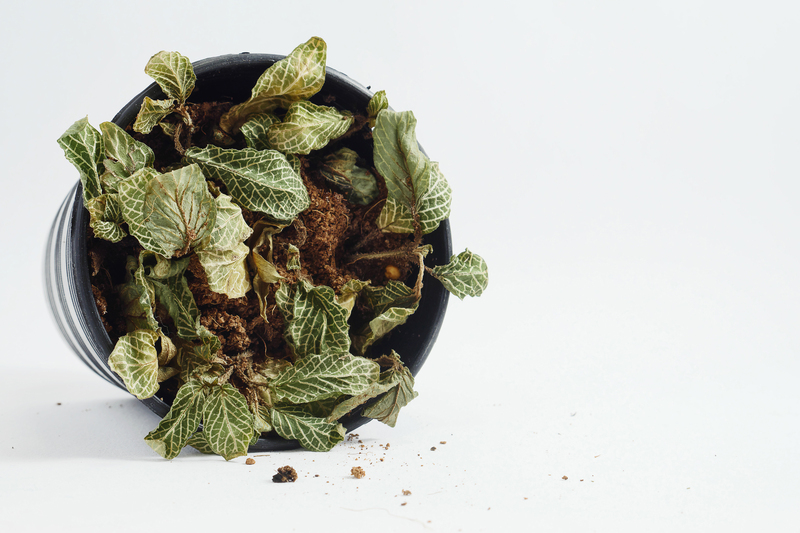Greener on Your Side: Lawn Care Tips and Secrets for Beginners
Welcome to your ultimate guide to beginner lawn care tips. If you've ever looked across the fence and wondered why your neighbor's lawn is greener than yours, you're about to discover the secrets to achieving that lush, healthy turf. Whether you're completely new or want to refine your approach, these lawn care tips will empower you to cultivate a lawn that's truly greener on your side.
The Basics of Lawn Care: Starting Off Right
Establishing a healthy lawn requires a combination of proper preparation, discipline, and a little know-how. While it might seem overwhelming initially, focusing on the basics ensures steady progress and lasting results.
1. Know Your Grass Type
- Identifying your grass species is the cornerstone of all lawn care for beginners. The right care varies between cool-season grasses (like Fescue, Kentucky Bluegrass) and warm-season varieties (like Bermuda, Zoysia).
- Tip: Cool-season grasses thrive in spring and fall, while warm-season types peak in summer.
2. Soil Health: The Foundation of Lawn Success
- Test your soil before doing anything else. Purchase a soil test kit from your local garden center or extension office. This simple test reveals pH and nutrient levels, helping you decide if amendments, like lime or fertilizer, are needed.
- Keep your soil slightly acidic to neutral (pH 6.0-7.0) for most grass types.
3. Proper Mowing Practices
- Set your mower blade at the correct height. For most lawns, 2.5 to 3.5 inches is ideal. Taller grass shades soil, retains moisture, and suppresses weeds.
- Never mow more than one-third of the grass blade in a single session.
- Keep mower blades sharp for clean cuts and healthier lawns.

Watering Wisdom: Making Your Lawn Thrive
Water is essential for a greener, more resilient lawn. However, watering mistakes are one of the most common issues for beginners.
Best Practices for Lawn Irrigation
- Water deeply and infrequently. Aim for one inch of water per week, applied in one or two deep sessions. This encourages deeper root growth and drought resilience.
- Morning is the best time to water, reducing evaporation and disease risk.
- Use a simple rain gauge or a can to measure weekly rainfall and irrigation.
- Avoid light, frequent watering--it leads to shallow roots and weak turf.
Drought Tolerance and Water Conservation
- Choose drought-resistant grass types if you live in hot, dry climates.
- Incorporate mulch or compost to improve soil water retention.
- Fix leaks in hoses and use smart timers for sprinkler systems.
Feeding Your Lawn: Fertilization Secrets
Fertilization is a key part of lawn maintenance for beginners, but a common mistake is blindly applying products without understanding your lawn's actual needs.
Choosing the Right Fertilizer
- Use soil test results to determine your fertilizer needs--only apply what's required to avoid waste and environmental harm.
- Nitrogen is critical for greening, while phosphorus and potassium support root and overall health.
- Look for slow-release fertilizers for longer-lasting nutrition.
Timing Matters
- Cool-season grasses: Fertilize in early fall and again in spring.
- Warm-season grasses: Feed lightly in spring, heavily in summer when growth is vigorous.
- Do not fertilize in extreme heat or drought--this can stress your lawn.
Weed, Pest, and Disease Control: Keep It Green and Clean
Even the healthiest lawns can face weed and pest invasions. Here's how to maintain a weed-free, pest-resistant lawn as a beginner.
Weed Management Tips
- Cultural control is essential: Mow high, water deeply, and fertilize correctly--thick, healthy grass naturally crowds out weeds.
- Treat weeds early with targeted herbicides or use manual removal for small infestations.
- Try natural solutions like corn gluten meal or boiling water for spot treating.
Pest and Disease Prevention
- Watch for signs of damage: thinning grass, brown patches, or visible insects.
- Encourage beneficial insects, like ladybugs, to reduce pests naturally.
- Remove thatch buildup (dead organic material near soil surface) to prevent disease.
- Apply appropriate treatments for specific issues--consult your local extension office for guidance.
Secrets to a Greener, Thicker Lawn
Which lawn care tricks truly make the difference for beginners? Here are expert-level secrets for a lawn that's not just green, but enviable.
1. Aeration and Overseeding
- Aeration punches small holes in the lawn, relieving soil compaction and helping water, air, and nutrients penetrate roots.
- Overseeding each fall fills in thin spots and increases turf density.
- Tip: Rent a core aerator or hire a professional for best results.
2. Topdressing with Compost
- Apply a thin, even layer of organic compost each spring or fall.
- This boosts soil biology, supplies slow-release nutrients, and improves water retention.
3. Mulching Mower Clippings
- Mulch grass clippings--don't bag them! They decompose, returning nitrogen and organic matter to your lawn.
- This eco-friendly secret saves you time and fertilizes your turf naturally.
Seasonal Lawn Care for Beginners
Every season asks something different from your lawn care routine. Paying attention to seasonal needs is *vital* to keeping your lawn beautiful all year.
Spring Lawn Preparation
- Rake out debris left from winter.
- Apply pre-emergent herbicides before weed seeds germinate.
- Fertilize as your grass breaks dormancy, following your soil's needs.
- Inspect for bare spots and consider overseeding.
Summer Lawn Care
- Mow higher during heatwaves to shield roots and save moisture.
- Water deeply in early morning to avoid fungal diseases.
- Treat visible weeds and monitor for drought stress--look for blue-gray blades or footprints that don't spring back.
Fall Lawn Renovation
- Aerate and overseed cool-season grasses.
- Apply a slow-release, high-nitrogen fertilizer to reinforce root growth.
- Continue mowing until grass stops growing.
Winter Lawn Care
- Remove leaves and avoid excess foot traffic on dormant turf.
- Service your mower for the coming season.
Common Lawn Care Mistakes to Avoid
Even seasoned homeowners slip up occasionally. As a novice, beware of these frequent pitfalls to ensure your lawn is always greener on your side:
- Overwatering--leads to shallow roots, fungus, and wasted water.
- Mowing too short--scalps grass and exposes soil to weeds.
- Ignoring soil health--results in poor growth, regardless of fertilizer.
- Applying chemicals incorrectly--inefficient and can damage your lawn.
Eco-Friendly Lawn Care: Growing Greener for the Planet
A truly sustainable approach to lawn care for beginners not only looks good but benefits the environment, too:
- Compost yard waste instead of sending it to the landfill.
- Choose organic lawn fertilizers and natural pest control.
- Plant native or drought-resistant grass varieties for lower water and fertilizer requirements.
- Encourage pollinators by leaving a few flowering plants or patches of clover.

The Ultimate Lawn Care Checklist for Beginners
Here's a quick-reference beginner lawn care checklist:
- Test and amend soil before planting or fertilizing
- Mow high and sharp for healthiest growth
- Water deeply, early, and sparingly
- Fertilize based on grass type and season
- Treat weeds early and maintain thick turf
- Aerate and overseed as needed
- Embrace eco-friendly and sustainable practices
Conclusion: A Greener Lawn Awaits You
Becoming the envy of your block isn't about luck--it's about applying the right lawn care tips for beginners and building consistent habits. Remember, the key to a greener, healthier lawn is understanding your soil, grass type, and local climate. Then, apply seasonal care, mow wisely, water conservatively, and fertilize only as needed.
Every lawn can be a rewarding outdoor oasis. By putting these beginner-friendly lawn care secrets into practice, you'll soon discover that it's truly greener on your side!
Ready to get started on your lawn transformation journey?
Bookmark this comprehensive guide and return whenever you need reminders or new ideas. Greener grass isn't just for the other side of the fence--it's within your reach!